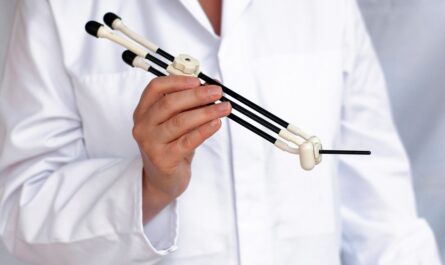
Prosthetic Legs: Revolutionizing Mobility for Amputees
Prosthetic legs have come a long way from the stiff wooden limbs of centuries past. Today’s prosthetics utilize cutting edge materials and designs to help amputees regain mobility and freedom of movement. Technological advancements are happening at a rapid pace, improving functionality and quality of life for those who have lost a leg. This article explores the history of prosthetic development and highlights some of the most innovative new designs currently being used and tested.
A Brief History of Prosthetic Leg Design
The earliest prosthetic limbs date back to Ancient Egypt, Greece and Rome, consisting of simple wooden legs often held on with straps. Significant strides were not made until industrialization brought the use of new materials like rubber, leather and iron in the late 18th century. Walter Reed and his colleagues made major contributions in the late 19th century through their work developing prosthetics for American Civil War veterans, helping to advance socket design and suspension techniques.
World Wars I and II further accelerated innovation as larger populations of soldiers returned home with amputations. Limbs made of new materials like aluminum and plastics helped improve comfort and suspension. Hydraulic knee joints also debuted, allowing for a more natural gait. The introduction of microprocessors in the 1960s-70s led to myoelectric prosthetics that could be controlled via electrical signals from residual muscles. Carbon-fiber composites beginning in the 1970s provided lightweight strength.
Modern Prosthetic Designs and Materials
Contemporary prosthetic legs utilize cutting edge materials, designs and control mechanisms. Some of the most promising current technologies include:
– Carbon-Fiber and Composite Materials: Carbon-fiber reinforced polymers offer strength comparable to aluminum but with around half the weight. They are extremely durable and custom formed for each individual. Composites allow for natural looking cosmesis (outer coverings).
– Microprocessor Knee and Ankle Units: Within the last 20 years, microprocessor controlled joints have become common. Sensors allow the joint to adapt in real-time for activities like sitting, standing, walking upstairs and more.
– Electric Motors and Actuators: Myoelectric prosthetics can now use battery powered motors and actuators versus cables and hydraulic systems. More natural motion is possible with individual control of knee and ankle flexion.
– 3D Printing and Customization: Advances in 3D modeling and printing enable fully customized sockets and covers to be precisely fabricated for each person using computerized limb scans. This improves proper fitting.
– Flexible andAdaptive Materials: Researchers are investigating flexible polymers, biomimetic designs, and prosthetics that can actively adapt their firmness based on gait demands. Some incorporate materials inspired by octopus tentacles.
– Proprioception and Sensory Feedback: Progress is being made on integrating sensors to provide feedback on ground contact, enabling better balance and coordination. Experimental designs incorporate vibrotactile or electrical stimulation to simulate touch and proprioception below the knee residuum.
Continued Advancement of Prosthetic Leg Technology
As technology marches forward, the future of prosthetic leg design looks bright. Researchers are actively working on solutions like:
– Powered Ankles: Efforts aim to recreate the complex multiple degree of freedom motion of the human ankle through small, lightweight electric actuators.
– Mind-Controlled Bionics: The ultimate goal is direct neural interfacing allowing limb movement solely through thought. Implanted electrodes pick up residual muscle signals for control.
– Autonomous Balancing: Advanced proprioceptive systems coupled with AI could enable automated balancing for activities like navigating uneven terrain with both legs occupied.
– Regenerative Medicine: Tissue engineering and organ printing hold promise for custom growing replacement limbs and joints utilizing a patient’s own cells.
– Exoskeleton Technologies: Powered “soft exosuits” are in development to augment able-bodied walking with energy return, offering benefits to aging populations as well.
Conclusion
Prosthetic leg technology has progressed enormously over the last century thanks to materials innovation, mechanical and electrical engineering advances, and continuous refinement by dedicated researchers and clinicians. As developments in fields like regenerative medicine, neural interfaces and soft robotics unfold, amputees may one day regain full natural mobility. The future promises prosthetics more capable and comfortable than ever before.
*Note:
1. Source: Coherent Market Insights, Public sources, Desk research
2. We have leveraged AI tools to mine information and compile it


